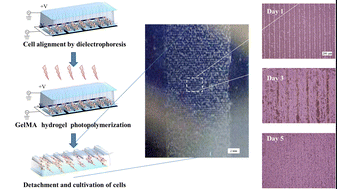*
Corresponding authors
a
WPI-Advanced Institute for Materials Research, Tohoku University, Sendai, Japan
b
Graduate School of Environmental Studies, Tohoku University, Sendai, Japan
E-mail:
matsue@bioinfo.che.tohoku.ac.jp
Fax: +81 227956167
c
Department of Medicine, Center for Biomedical Engineering, Brigham and Women's Hospital, Harvard Medical School, Cambridge, Massachusetts 02139, USA and Harvard-MIT Division of Health Sciences and Technology, Massachusetts Institute of Technology, Cambridge, Massachusetts 02139, USA
d
Department of Chemical and Biological Engineering, Chalmers University of Technology, SE-412 96 Göteborg, Sweden
e
Department of Bioengineering and Robotics, Graduate School of Engineering, Tohoku University, Sendai, Japan
f
Wyss Institute for Biologically Inspired Engineering, Harvard University, Boston, Massachusetts 02115, USA
g
Kyung Hee University, School of Dentistry, Hoegi-dong, Dongdaemun-gu, Seoul, Korea
E-mail:
alik@rics.bwh.harvard.edu
Fax: +1 617 768 8477


 Please wait while we load your content...
Please wait while we load your content...